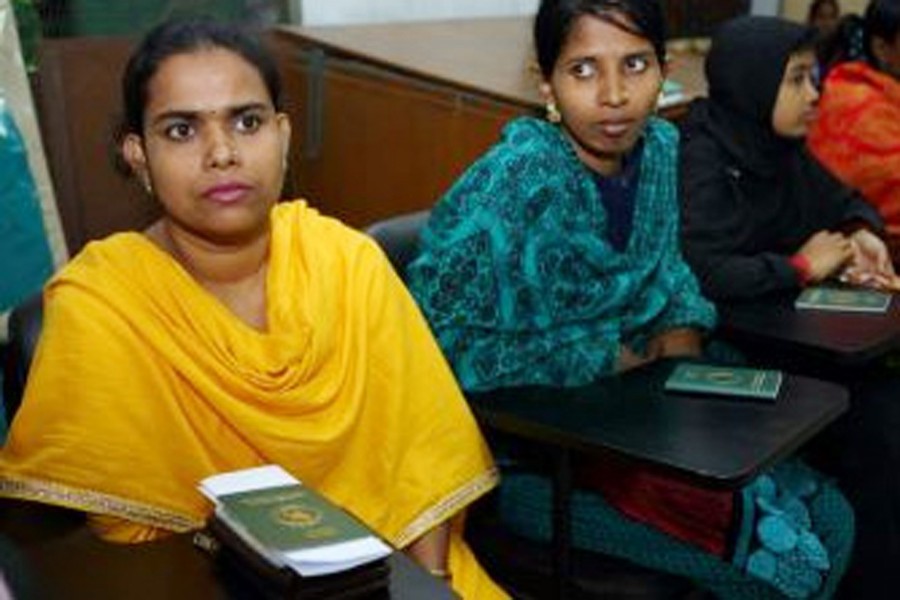Female migrant workers, both the internationally and internally migrated ones, are playing a vital role in uplifting the country’s economy as they are earning foreign currency and sending remittance to home, contributing to bringing a positive socioeconomic change in the country.
According to experts, readymade garments and other manufacturing industries, and the migrants’ remittance are the two major foreign exchange earning sources of the country.
Garments and other manufacturing industries are highly dependent on internally migrated female workers to meet the demand of labour force in the RMG sector, they said.
Internationally migrated labours, who work mostly in gulf and other Arab states and the South East Asian countries, send remittance to home, reports BSS.
“A huge number of Bangladeshi women are going abroad every year to work as domestic helps despite a growing number of reports of getting abused in adverse working conditions,” founding chair of Refugee and Migratory Movements Research Unit (RMMRU) Dr Tasneem Siddiqui said.
“About 90 per cent income of the female migrant workers comes to the country as they spend a little as living expenditure. They live and eat meals in the owners’ houses abroad,” she said.
According to the Bureau of Manpower Employment and Training (BMET), a total of 6,84,962 workers, including 91,921 female workers, went abroad from January to November in 2018.
In 2017, the total number of migrant workers were 10,08,525, and of them, 1,21,925 were female.
Bangladeshi expatriates sent US$6,286.28 million remittance to home in the first five months of the current fiscal 2018-19. They sent US$ 14,978.86 million in fiscal 2017-18, while US$ 12,769.45 million in fiscal 2016-17, US$ 14,931.18 million in fiscal 2015-16 and US$ 15,316.91 million in fiscal 2014-15.
Tasneem said a female worker has to spend one year to cover her migration cost while a male worker needs three years.
“People come to recruiting agencies through middlemen and that is why we cannot ignore the role of middlemen in the process,” she added.
Tasneem recommended bringing these middlemen into a legal framework for reducing the migration cost of workers.
“We should keep them (middlemen) within a legal framework and restrict recruiting agencies from charging extra amount in the name of migration cost,” she added.
An official at BMET said the out-bound Bangladeshi women workers are mostly employed at low-paid and hazardous jobs like housekeeping, which often put them in vulnerable situation.
He said there is a good job demand for skilled and professional women, including nurses, caregivers, babysitters, drivers, front-desk attendants, receptionists, cashiers and beauticians in parlours, hospitals and shopping malls of the Middle East, European and Asian countries.
A UN study titled ‘External Market Analysis for Women Migrant Workers of Bangladesh’ showed that around 95 per cent of the Bangladeshi women go abroad, mostly to the Arab countries, as migrant domestic workers.
It revealed that skilled and semi-skilled workers earn higher salary and enjoy better living, working and social conditions compared to the illiterate and unskilled ones.
Bangladesh could tap the potential of some Southeast Asian markets, including Singapore, Malaysia and Hong Kong, by sending women workers and thus earn more remittance.
The BMET official said the government will facilitate the women workers’ migration to any country in the world aiming to boost the country’s foreign exchange earnings.


